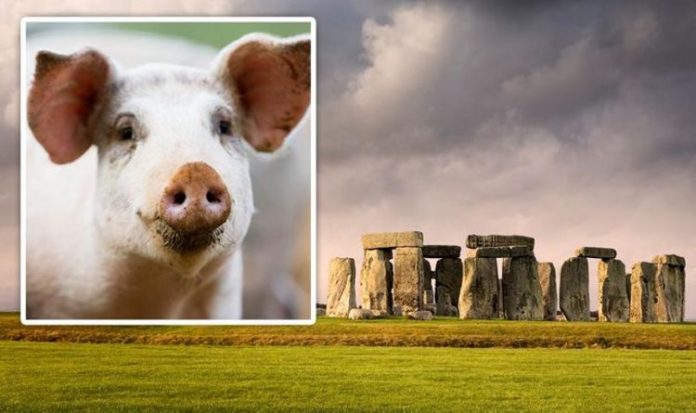The 5,000-year-old ancient stone structure still stands in the fields of Wiltshire and is one of Britain’s most famous monuments, successfully puzzling archaeologists for decades. A recent study proposed the ancestors of the builders of the ancient monument travelled west across the Mediterranean before reaching Britain after researchers compared DNA extracted from Neolithic human remains. They concluded that the Neolithic inhabitants were descended from populations originating in Anatolia (modern Turkey) that moved to Iberia before heading north.
But archaeologist Julian Richards revealed during the Megalithomania Conference that there are only six available samples of the group associated with the building of Stonehenge, in comparison to the 67 available early-Neolithic samples in the area.
He added: “What is being suggested is that there is almost a complete population replacement within a few generations by European incomers.
“This, as a practical person, I find difficult to understand, because the other suggestion is that at the end of the Neolithic is a population in decline.
“That’s why it’s easy for a group of incomers to undertake a replacement.
“It seems extraordinary that a population in decline would be building things like this [Stonehenge] in stone.
“If you have a declining population, how are they able to do all this?”
Mr Richards went on to outline a theory he had as to why Stonehenge was built.
He said: “You could argue that sometimes constructing things on a monumental scale is done by societies in crisis.
“They know they are under stress, they know they are on the way out, and in this case, it’s from incomers with a new economy.
READ MORE: Stonehenge bombshell: Mystery of ancient monument deepens after DNA anomaly pinpointed
He continued in June: “I did make the suggestion that if you were looking for a way of disposing of the dead without leaving any trace whatsoever, then pigs are a good way of doing it.
“At Durrington Walls, there is a lot of evidence of people eating pigs, they’ve also shot some of them with flint-tipped arrows, which is not an efficient way of killing a pig.
“It is more likely to make them angry than it is to kill it, but what if you are feeding the dead to them and then feasting on the pigs later?
“Interesting thought, absolutely unprovable because there is no way of looking at isotopes in pig ones to see whether they ate people, but it’s an idea I have.”







